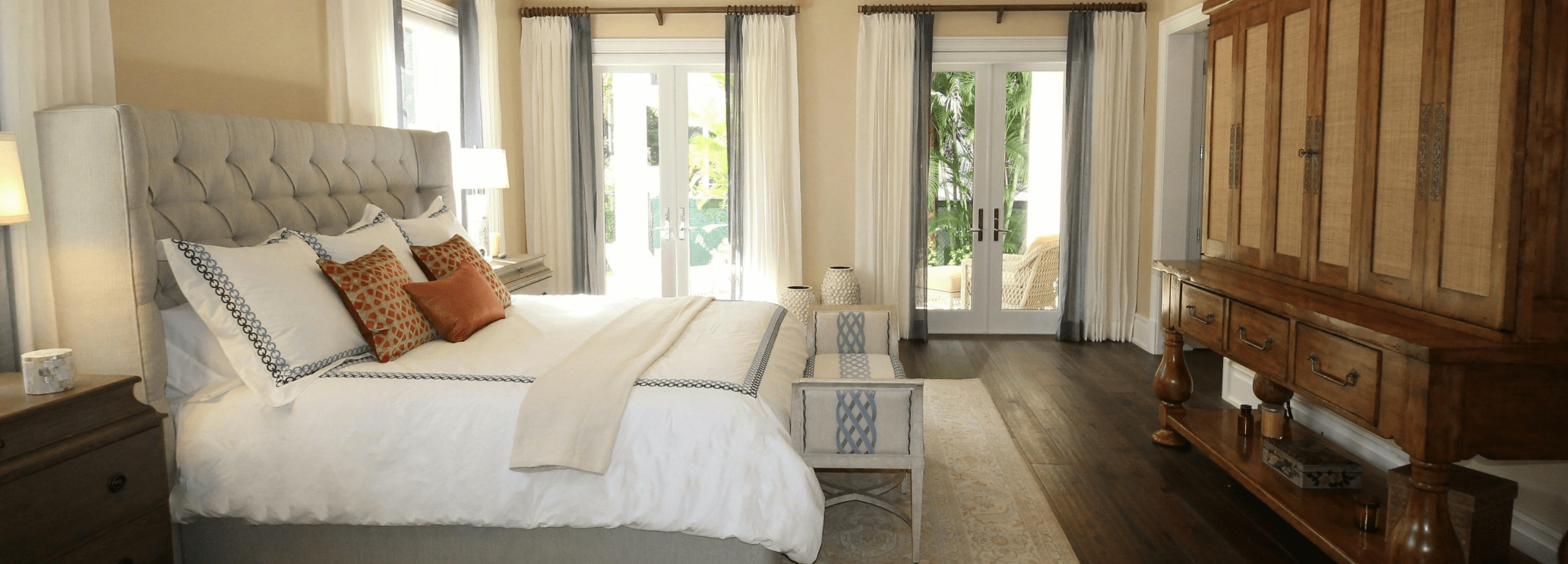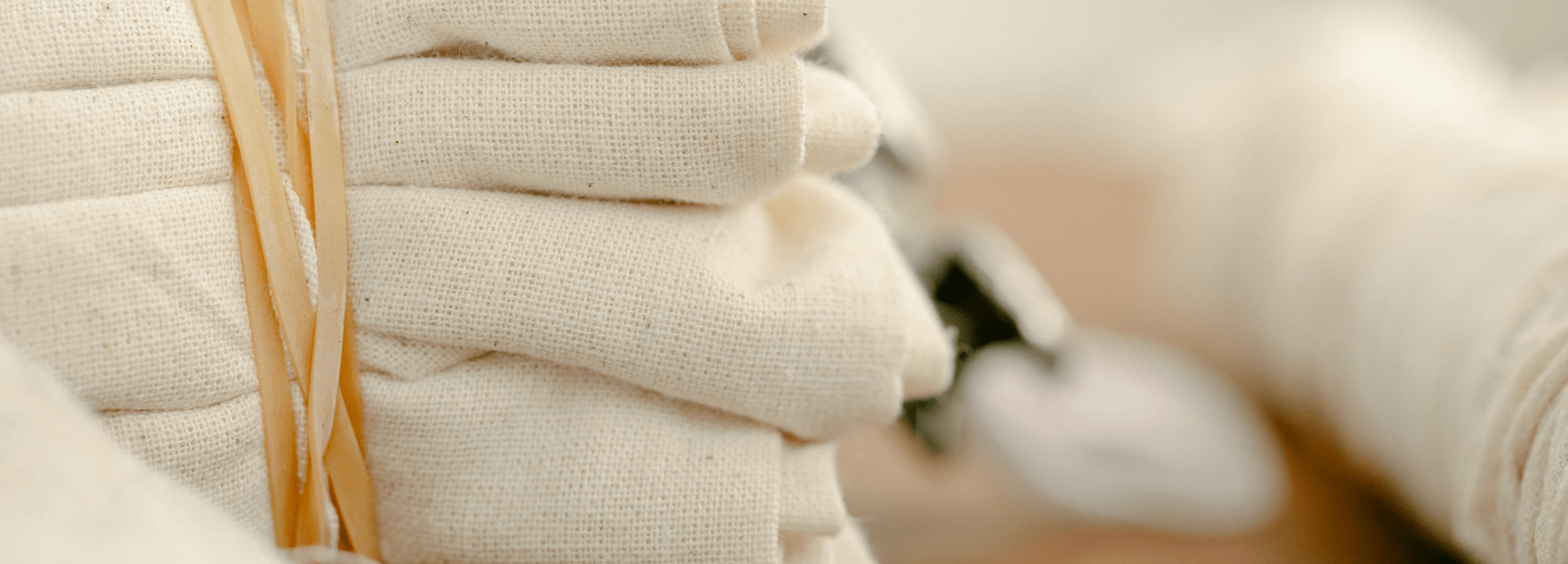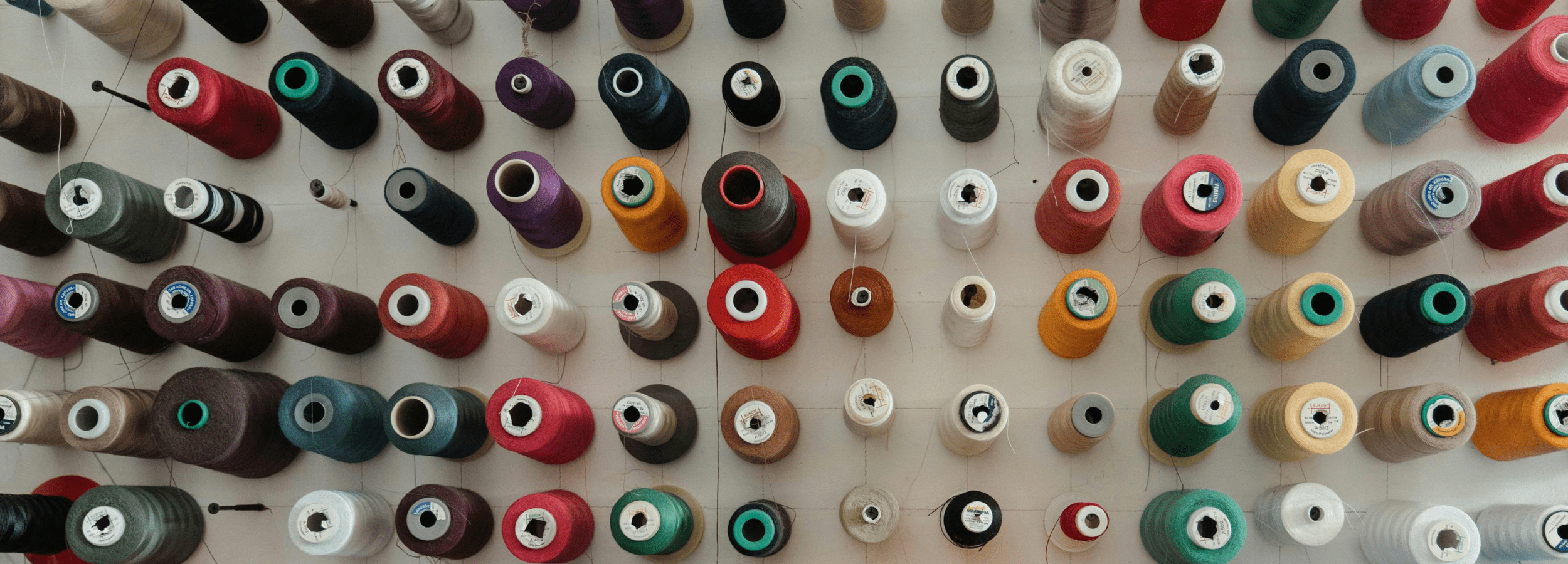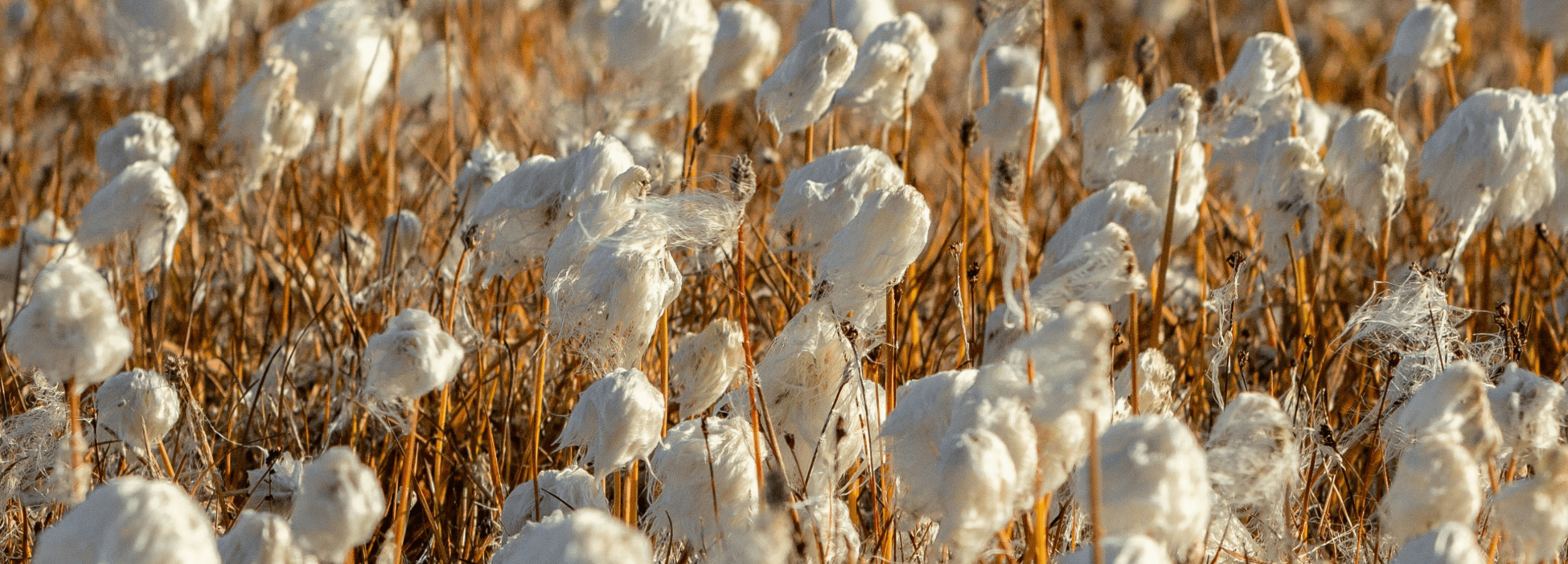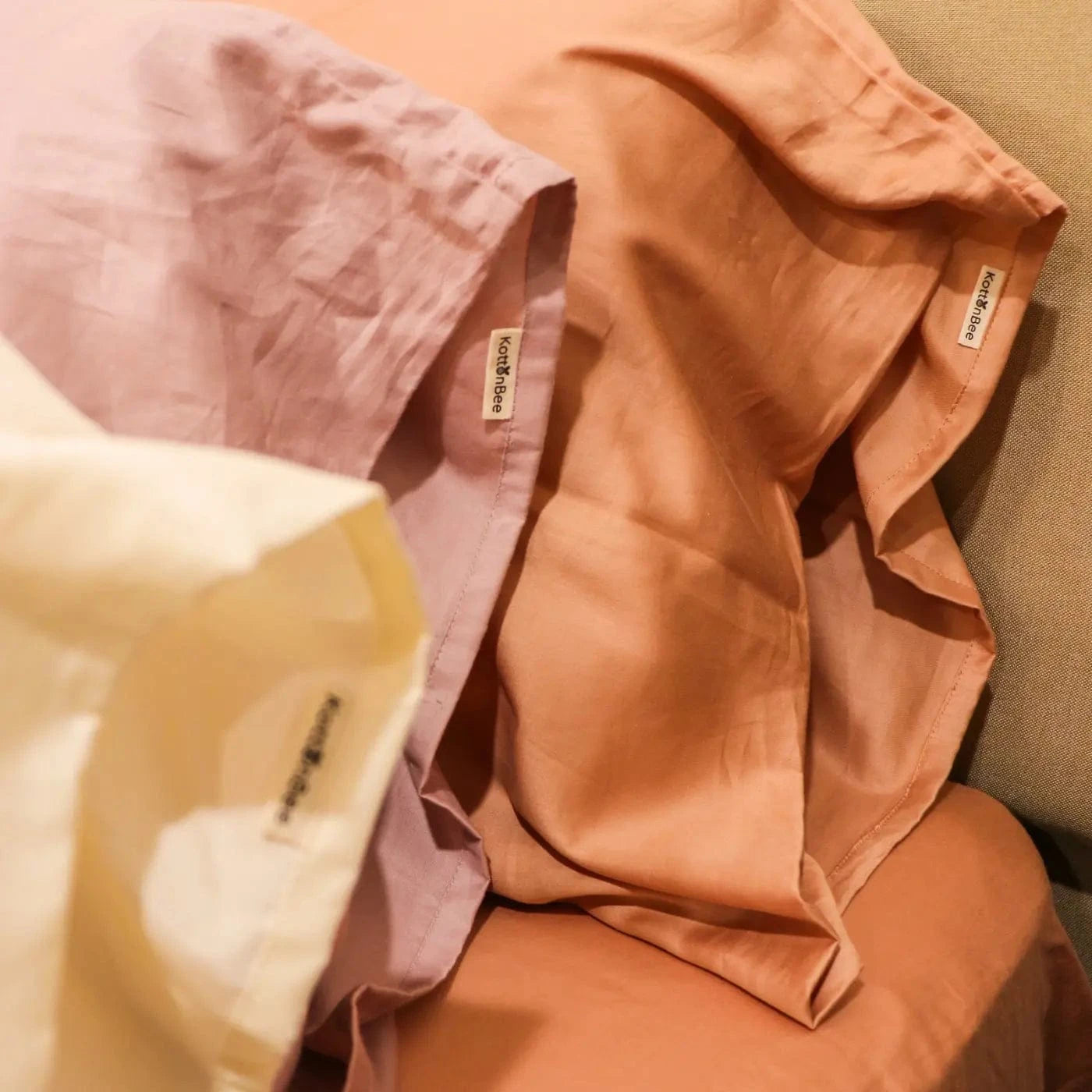
Pillowcases
These are like superhero capes for your pillows, keeping them safe from all the nighttime terrors. They come in a variety of fabrics and patterns, ready to add a touch of personality to your sleep style. Most importantly, it should feel good to your skin.
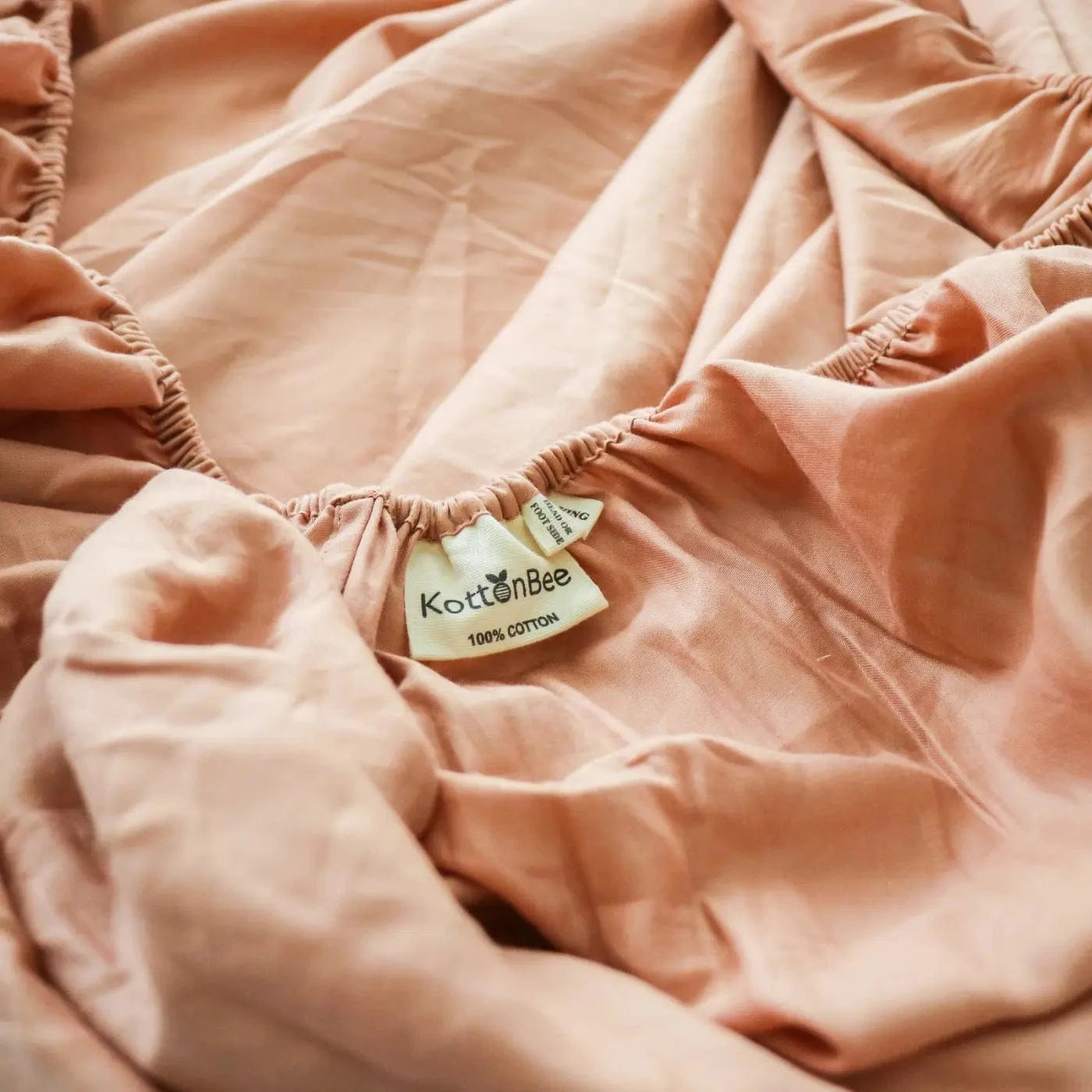
Fitted Sheets
They're the elastic hugs that keep your mattress feeling snug and comfy. Like magic, they come in different sizes to perfectly fit any mattress, just like those stretchy pants that always have your back. While buying, make sure the fitted sheet has deep enough pockets to fit your mattress.
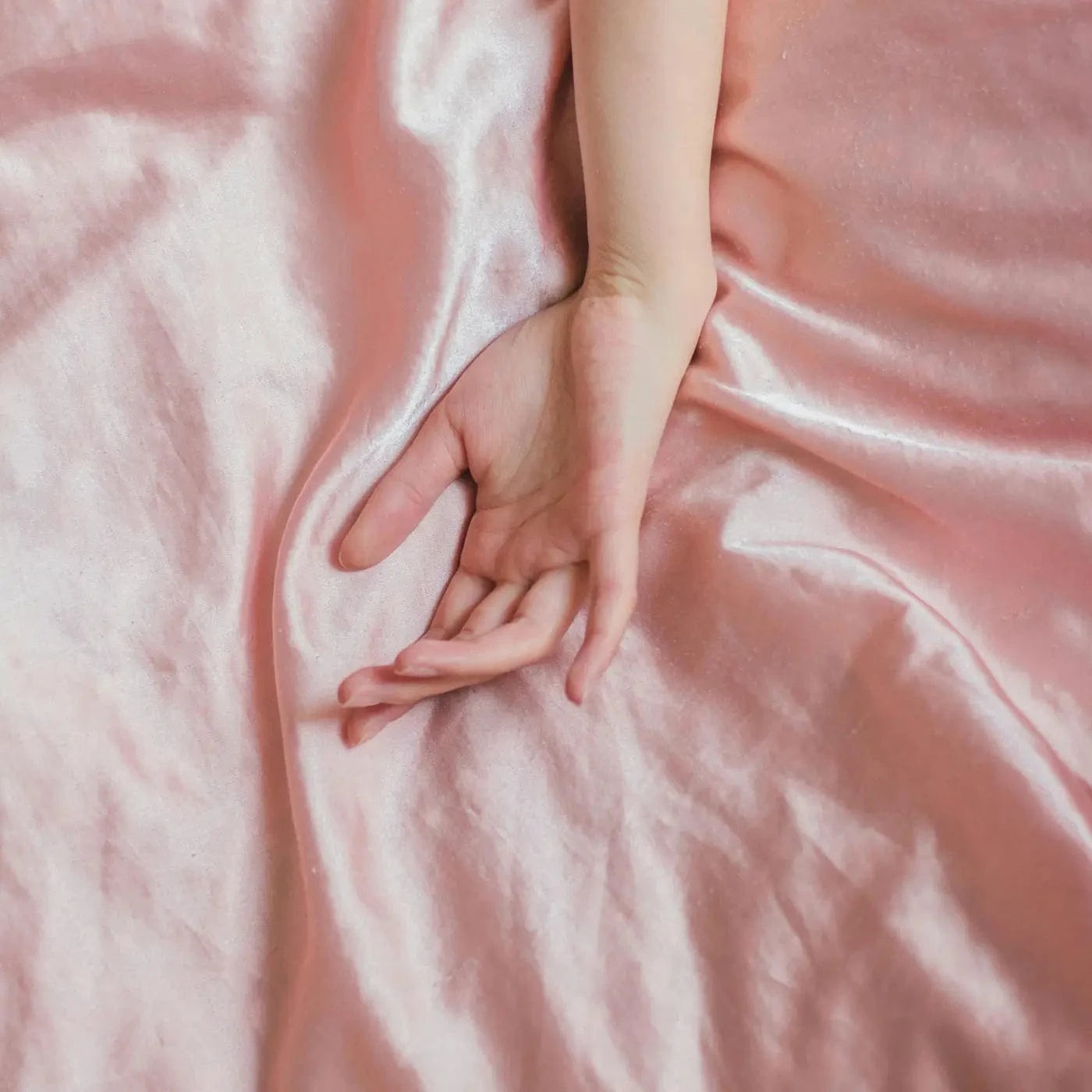
Flat Sheets
Think of these as the cozy cloud that tops off your whole sleep setup, adding that extra layer of comfort and style. It's like your bed's best friend, ready to wrap you up in a snug embrace.
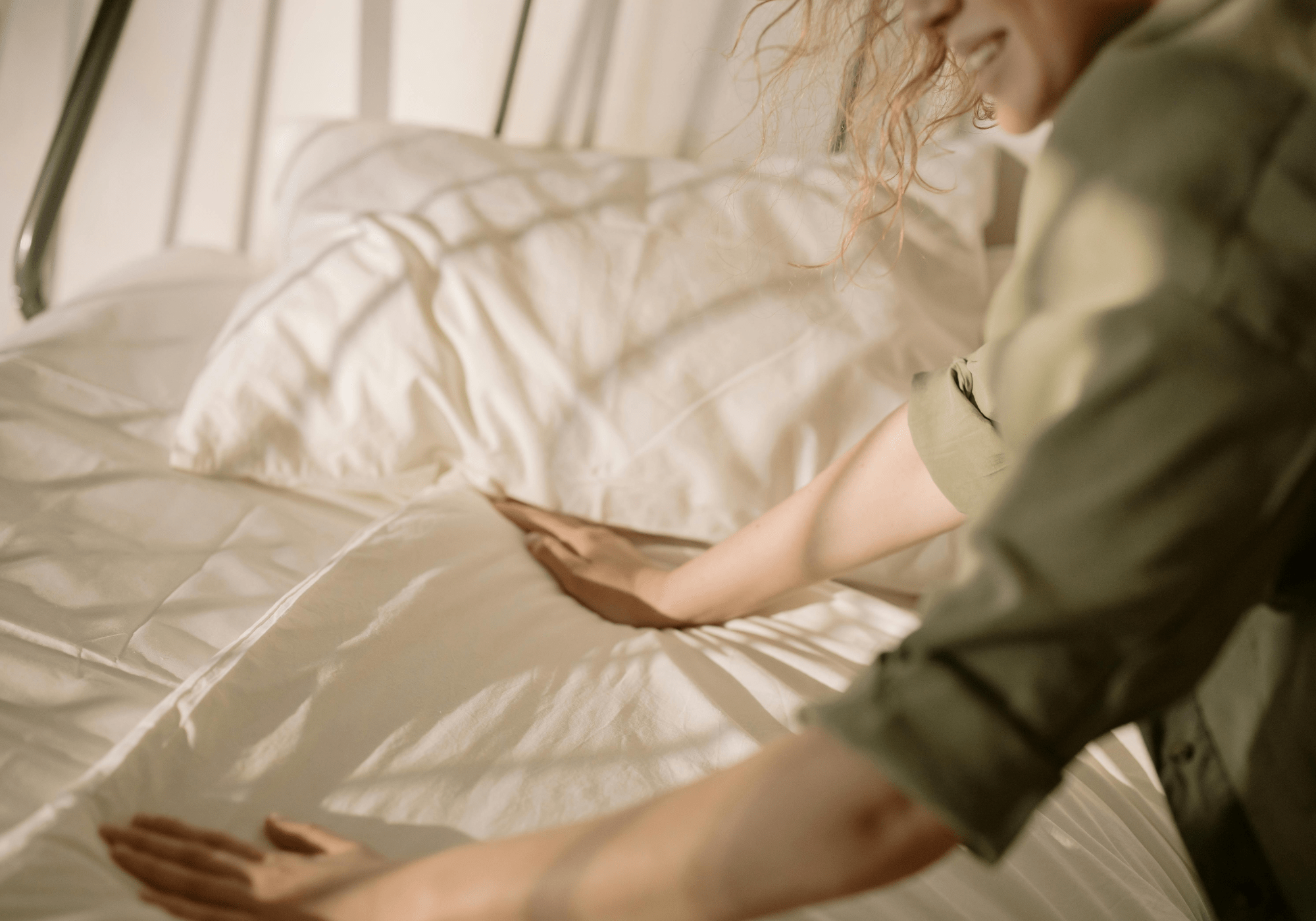
When selecting a pillowcase, or a fitted sheet or flat sheet check if it’s durable, feels good to touch, made with naturally dyed and sustainable material.
When it comes to sheets, it's not just about thread count and color - fabric plays a huge role in how your bed feels. Let's take a fun look at the different kinds of fabrics you might encounter when shopping for sheets.
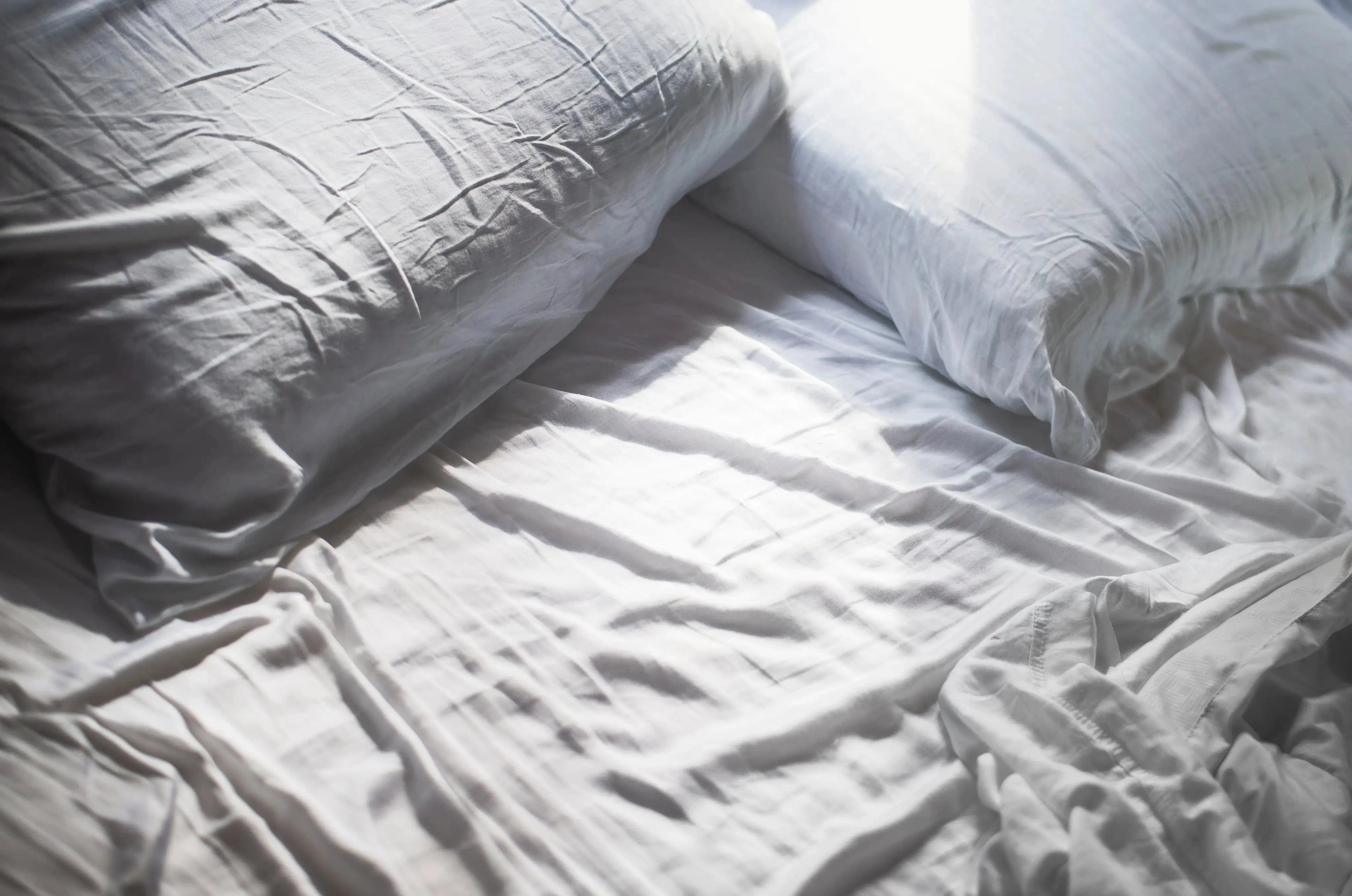
Cotton
Like slipping into your favorite T-shirt, cotton sheets are cool, comfortable, and come in a variety of weaves. Whether you prefer percale for that classic crispness or sateen for a slightly smoother feel, cotton sheets are the all-time favorites that never go out of style. Look for cotton which is Long Staple and ethically made.
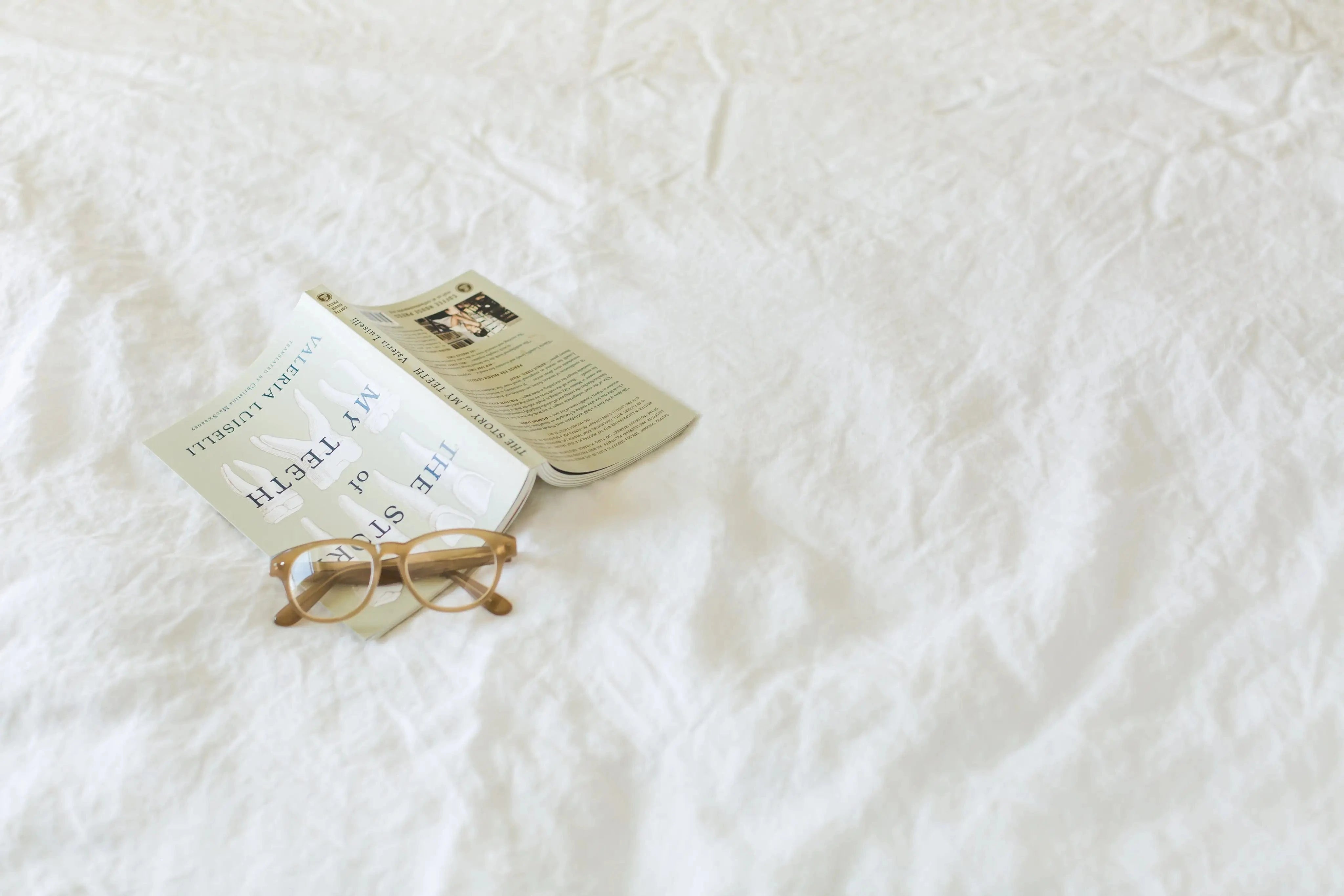
Linen
If you want that relaxed, laid-back vibe in your bed, linen sheets are the way to go. They're the cool kids on the block, effortlessly stylish and perfect for warm sleepers. Plus, they look better rumpled—so no need to stress about making the bed. Look for Linen which is blended with Cotton to give it more durability and better breathability.
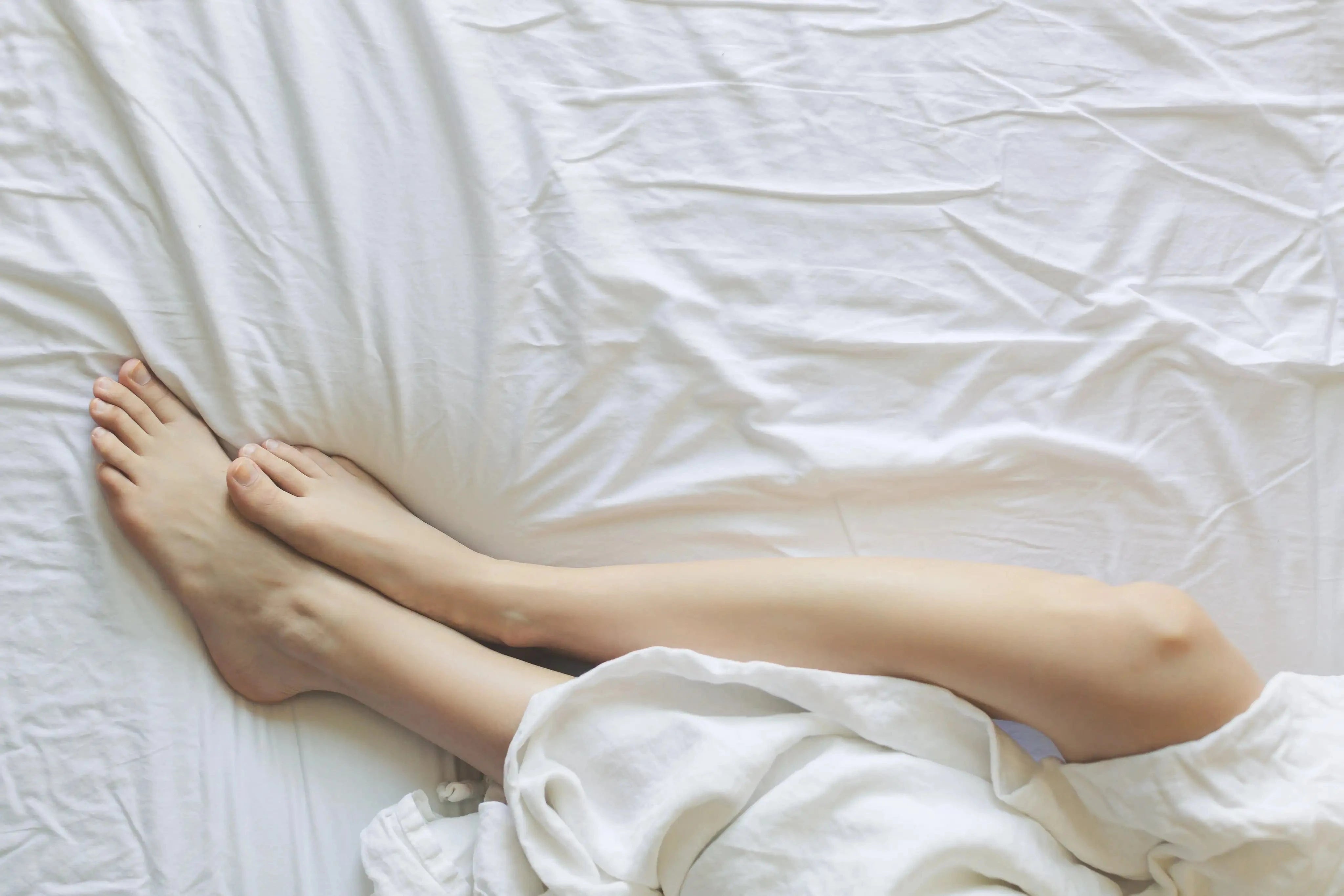
Satin
For those who love a little luxury, satin sheets bring that touch of glamor and opulence to your bedroom. They're shiny, smooth, and make you feel like royalty as you slip into bed.
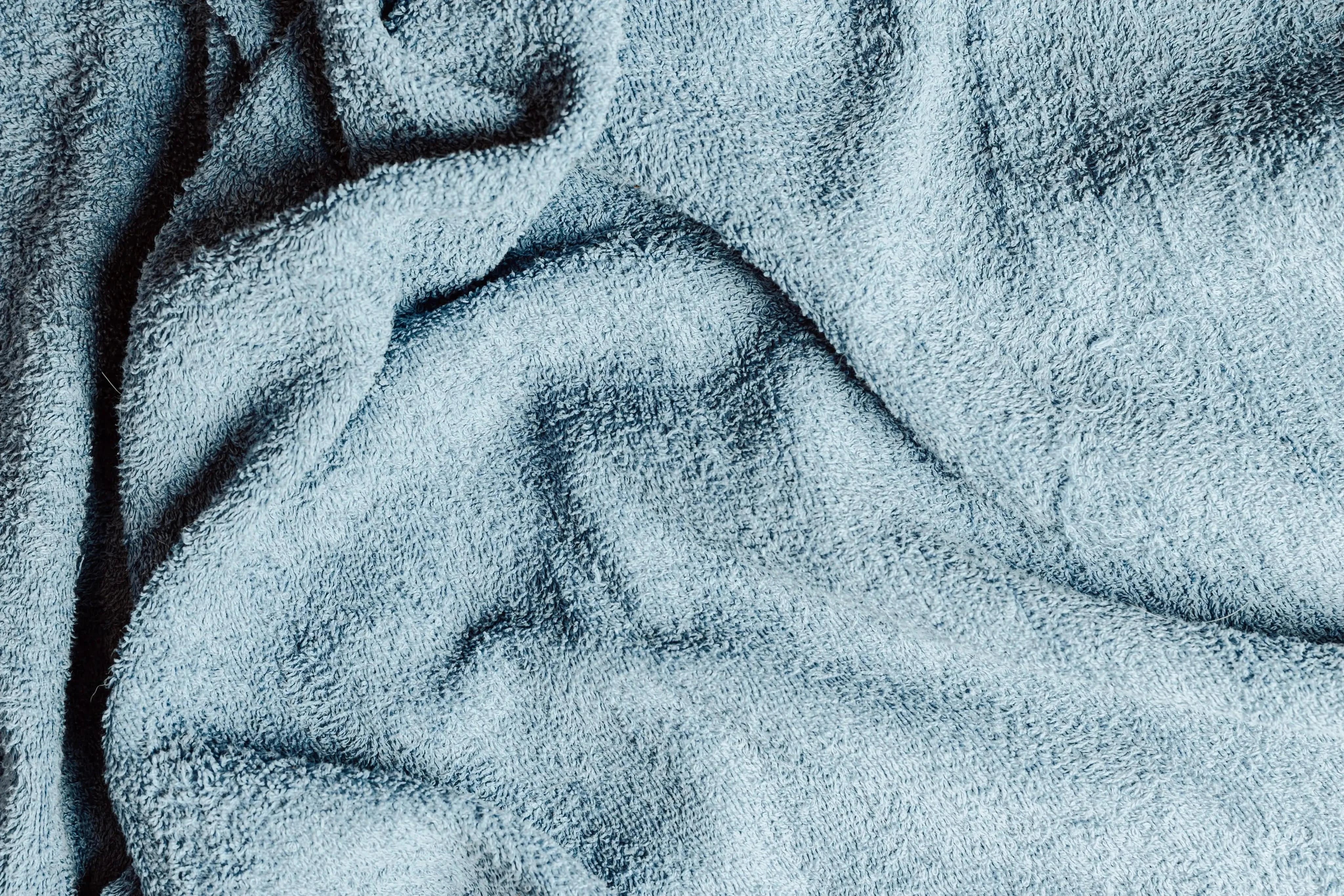
Microfiber
A budget-friendly option with plenty of perks, microfiber sheets are super soft, wrinkle-resistant, and easy to care for. They're perfect for busy bees who want both comfort and convenience.
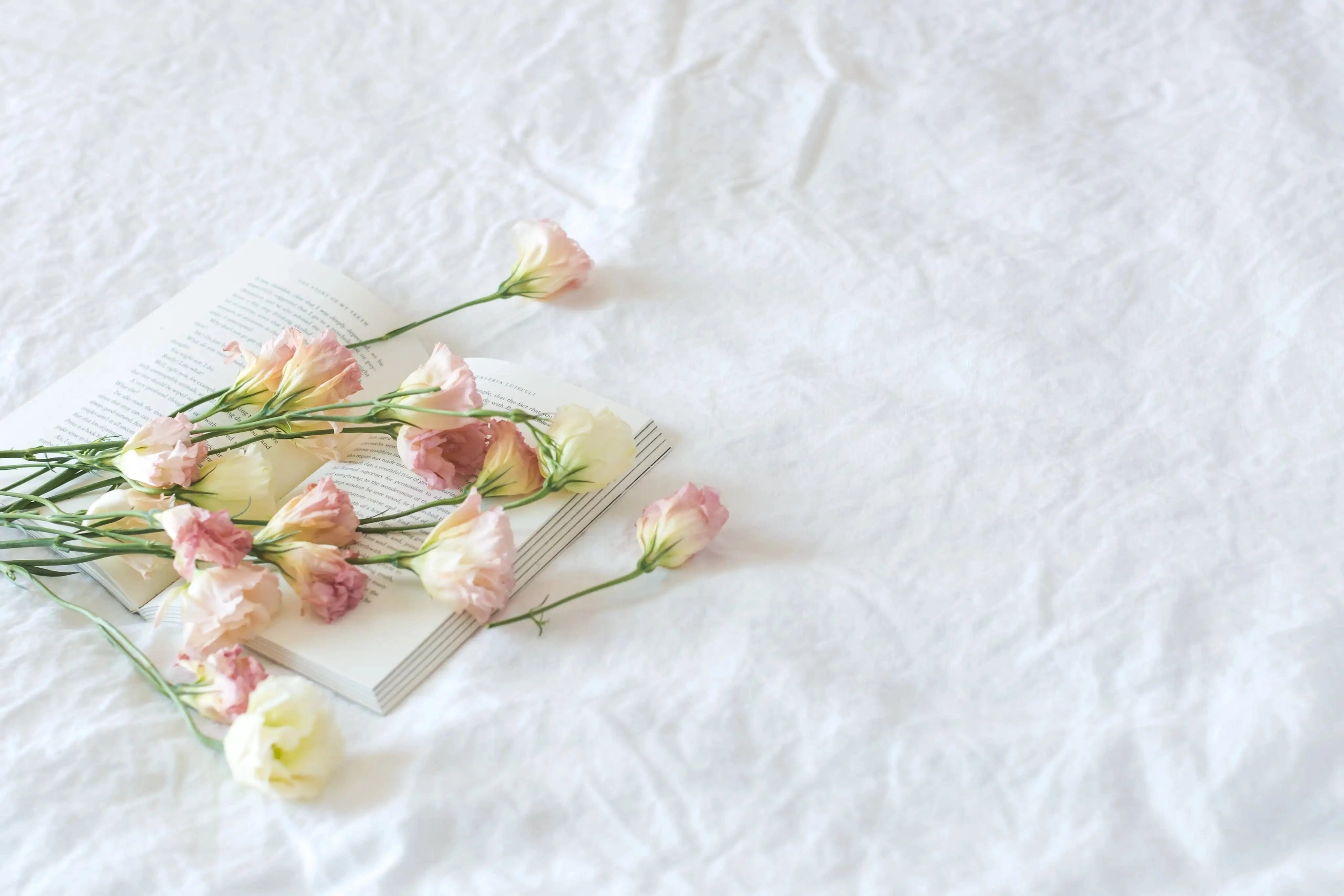
Flannel
When winter comes knocking, flannel sheets are the warm, fuzzy hug your bed needs. They're soft, snuggly, and make those cold nights feel a little less daunting.
Thread count is often hailed as the be-all and end-all of sheet quality, but is it really the royal road to better bedding? Let's unravel the mystery behind thread count and its role in choosing the perfect sheets.
Thread count refers to the number of threads woven into one square inch of fabric. Generally, the theory goes that a higher thread count indicates a softer and more luxurious sheet. However, this is not always the whole story.
While thread count is important, it’s not the sole factor in determining the quality of sheets. High thread count doesn't necessarily guarantee superior comfort, as quality materials and craftsmanship also play a critical role. A sheet made from high-quality, long-staple cotton with a thread count of 300 could feel more luxurious than one with a thread count of 1000 made from a lower-grade material.
The sweet spot for thread count can vary, but many experts agree that a range of 200-400 is often ideal for comfort and durability. This range ensures a soft and breathable sheet without compromising on quality.
Beware of exaggerated thread count claims. Some manufacturers artificially inflate thread counts by counting multi-ply threads, which can mislead consumers. It’s essential to look beyond the numbers and consider the overall fabric quality, weave, and material to assess sheet comfort.
Ultimately, the ideal thread count comes down to personal preference. While a higher thread count may equate to a smoother sheet, it’s essential to consider other factors such as material, weave, and fabric quality to find the perfect sheet for your comfort needs.
In conclusion, thread count is just one piece of the bedding puzzle. When choosing sheets, it’s essential to consider thread count alongside material, weave, and overall fabric quality to ensure a comfortable and restful night's sleep.
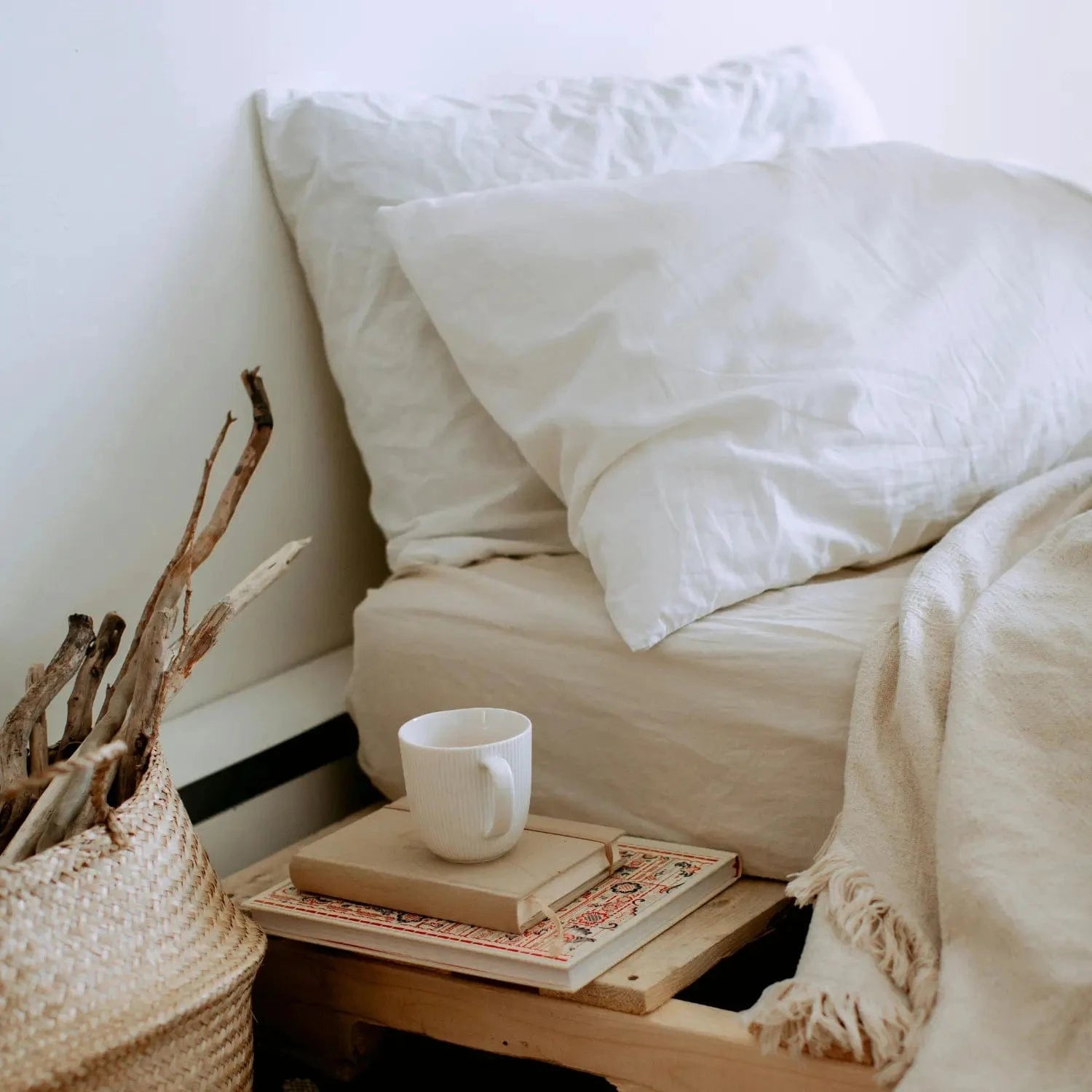
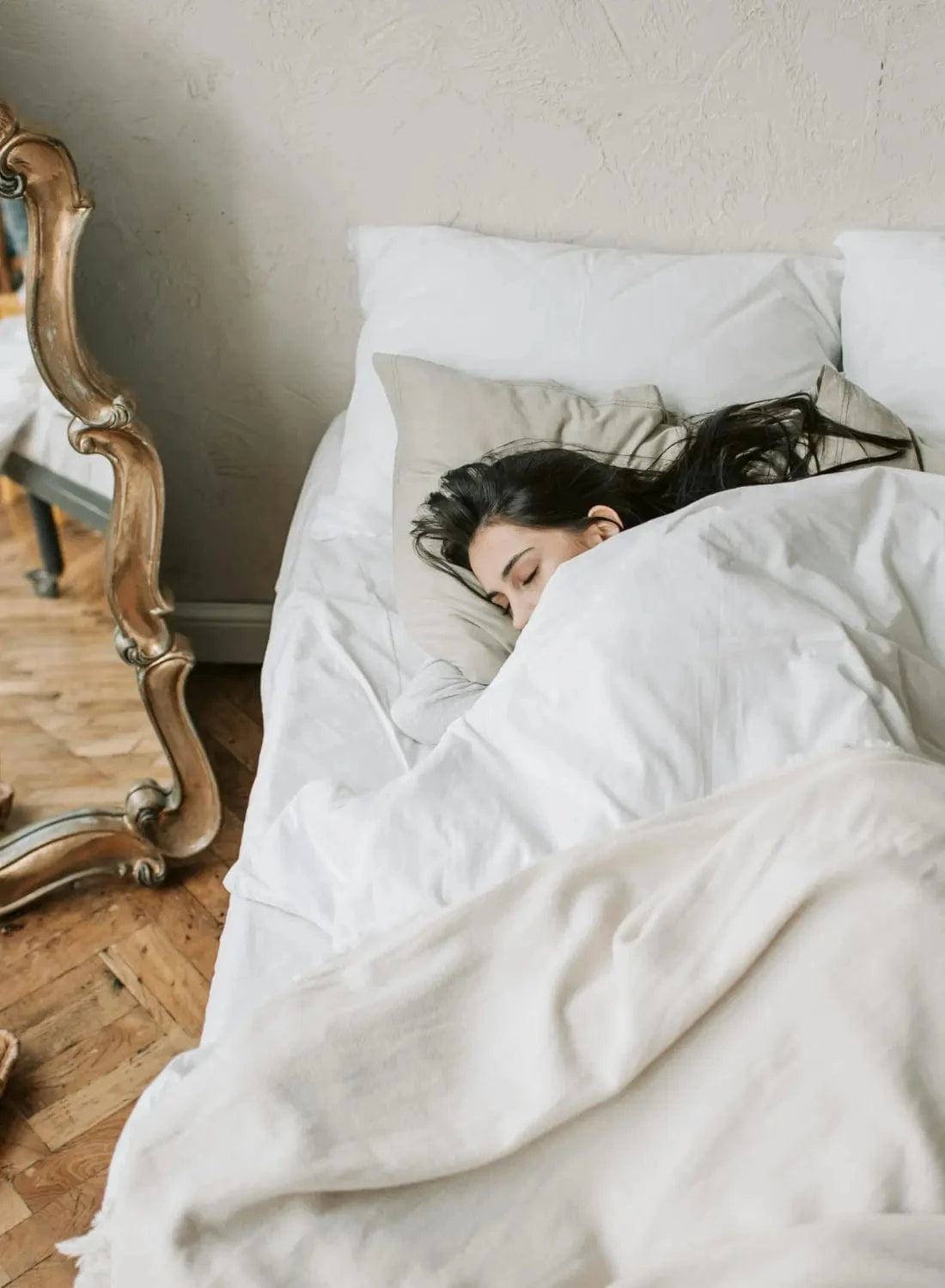
Short Staple Cotton
Characterized by shorter fibers, short staple cotton is more common and less expensive compared to its long staple counterpart. While it can make for comfortable sheets, it may be more prone to pilling and showing signs of wear over time.
Long Staple Cotton
Long staple cotton, on the other hand, boasts longer, finer fibers. This longer length results in stronger, smoother, and more luxurious yarns, ultimately leading to softer, more durable, and higher-quality sheets. Its extended fibers also mean that the yarn can be spun into finer, stronger threads, creating a substantial fabric with fewer exposed ends that can result in pilling.
Importance of Long Staple Cotton
The length and strength of long staple cotton fibers make them ideal for creating sumptuous, soft, and durable sheets. Due to their more manageable length, these fibers can be spun into finer, smoother, and more uniform yarns, resulting in a luxurious and long-lasting fabric. Sheets made from long staple cotton are less likely to pill, tear, or wear out quickly, making them a superior choice for those seeking quality and comfort.
In conclusion, long staple cotton stands out as a superior choice when it comes to sheet quality and longevity. Its longer, stronger fibers ensure a softer, more durable fabric that provides comfort and luxury night after night. When shopping for sheets, selecting those made from long staple cotton can be a game-changer, offering a haven of softness and durability for a peaceful night's sleep.
Embracing Nature
When it comes to choosing bedding, the process of dyeing fabric holds a crucial role in determining the quality and impact of the sheets. Here's why opting for sheets that are naturally dyed can make a significant difference in your bedding choice.

Health and Well-Being
Sheets that are naturally dyed are free from harmful chemicals commonly found in synthetic dyes. This makes them a healthier choice, particularly for those with sensitive skin or allergies. The absence of harsh chemicals reduces the risk of skin irritation and promotes a more natural and comfortable sleep experience.

Environmental Impact
The use of natural dyes supports eco-friendly and sustainable practices in the textile industry. By opting for naturally dyed sheets, you are contributing to a reduction in water pollution, energy consumption, and the overall environmental impact associated with traditional chemical dyeing processes.

Vibrancy and Beauty
Natural dyes offer a diverse and rich color palette, producing hues that are subtle, earthy, and authentic. The shades derived from plant sources are unique and often develop a beautiful patina over time, adding to the charm and character of the sheets.

Sustainability
Choosing naturally dyed sheets aligns with a sustainable lifestyle and supports ethical and eco-conscious manufacturing processes. By embracing the use of natural dyes, you are contributing to a more sustainable and environmentally friendly textile industry.
In summary, selecting sheets that are naturally dyed offers a range of benefits, from promoting a healthier sleep environment to supporting sustainable and eco-friendly practices. Embracing naturally dyed sheets not only enhances the comfort of your bed but also reflects a mindful and eco-conscious approach to your bedding choices.
Join Us


